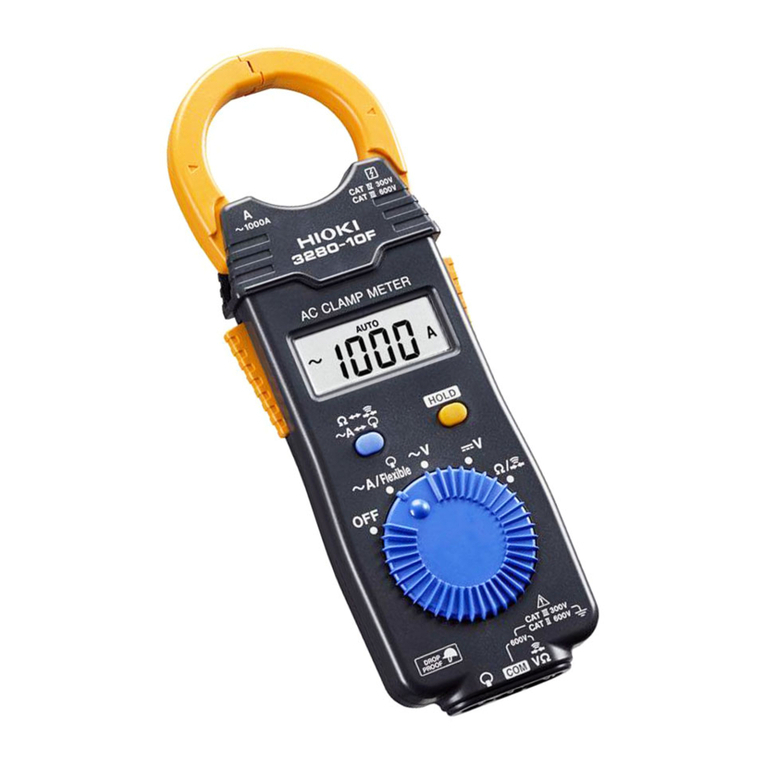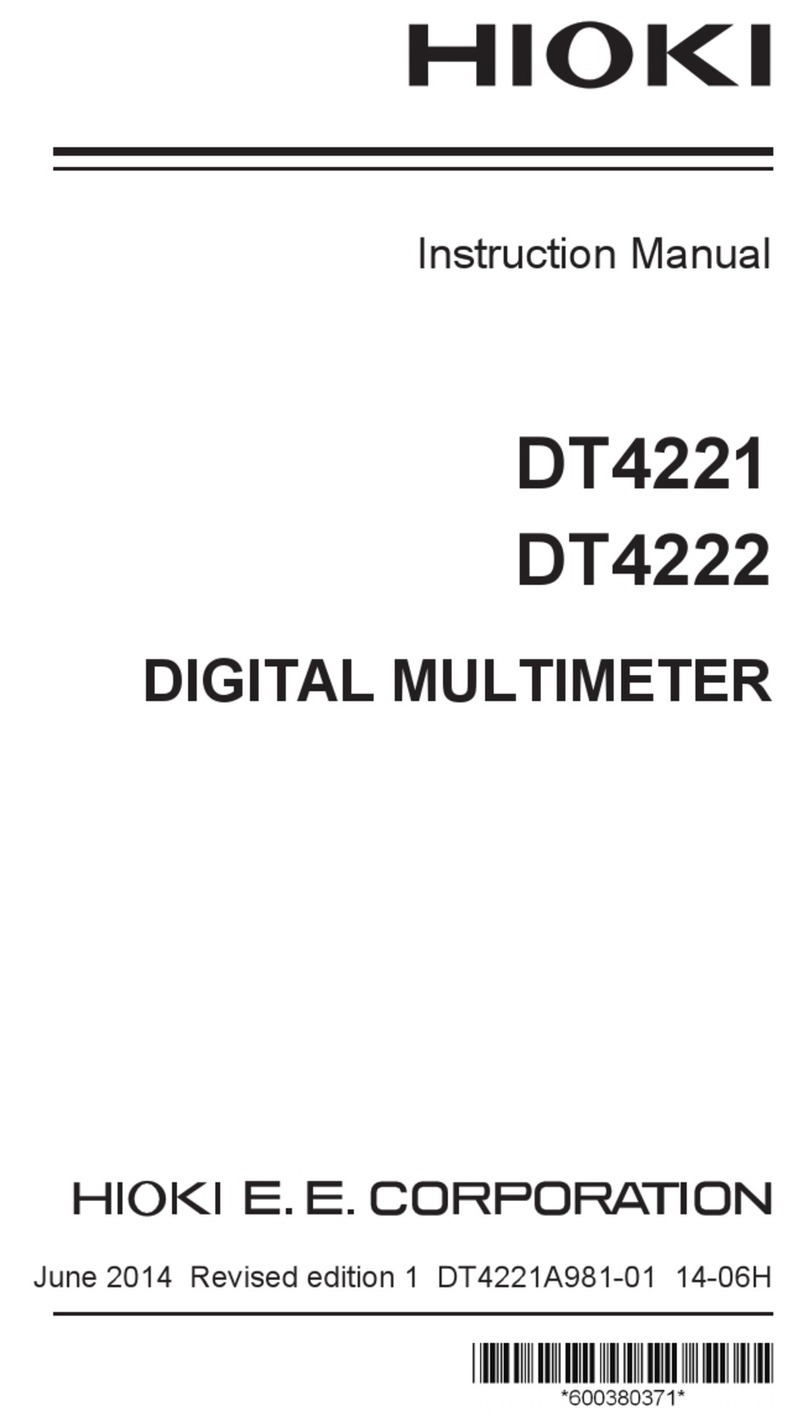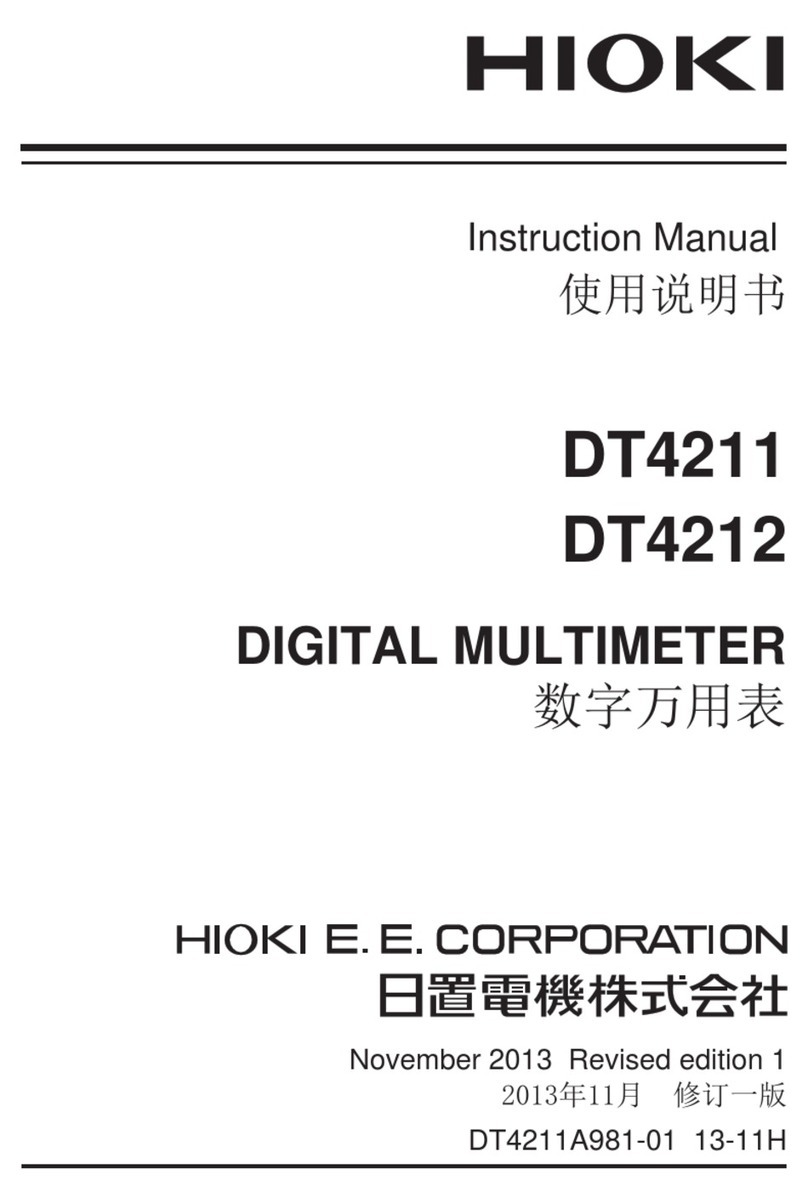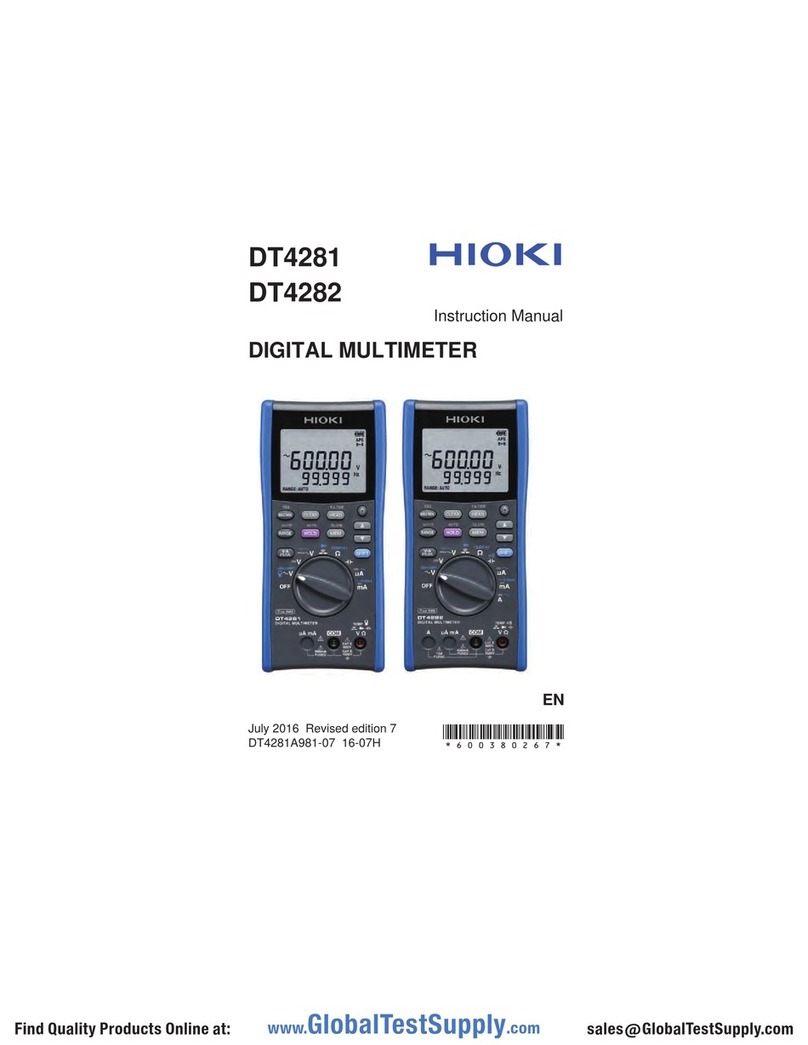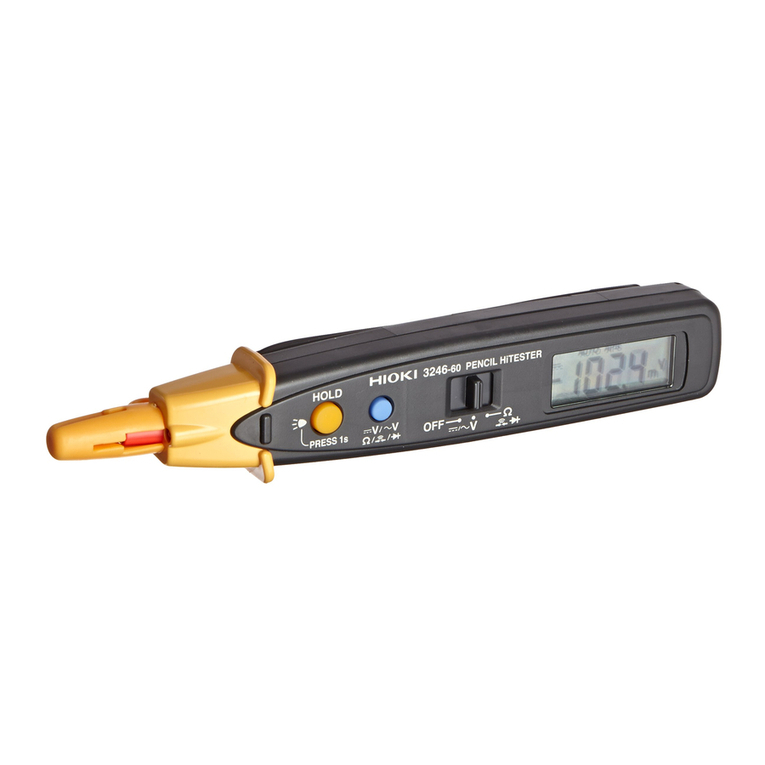Hioki DT4252 User manual
Other Hioki Multimeter manuals
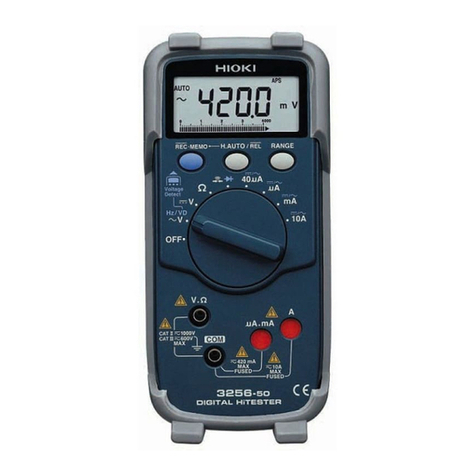
Hioki
Hioki 3256-50 User manual

Hioki
Hioki DT4251 User manual
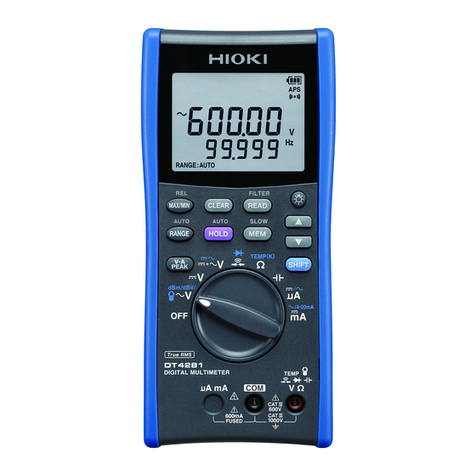
Hioki
Hioki DT4280 Series User manual

Hioki
Hioki DT4261 User manual

Hioki
Hioki DT4222 User manual

Hioki
Hioki DT4261 User manual

Hioki
Hioki DT4200 Series User manual
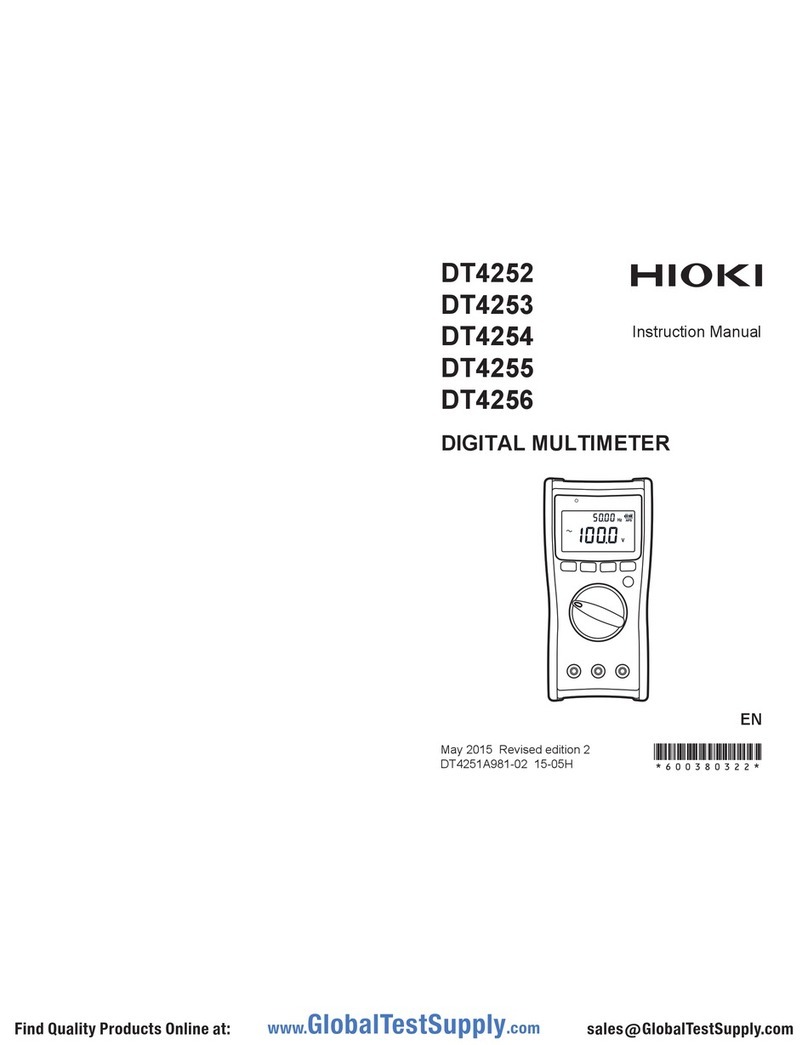
Hioki
Hioki DT4252 User manual
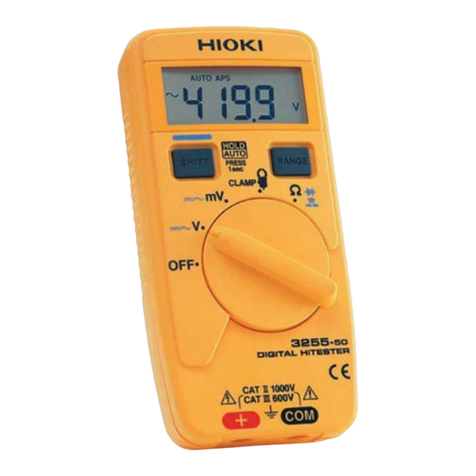
Hioki
Hioki 3255-50 HiTESTER User manual

Hioki
Hioki DT4281 User manual
Popular Multimeter manuals by other brands

Gossen MetraWatt
Gossen MetraWatt METRAmax 6 operating instructions

PeakTech
PeakTech 4000 Procedure of calibration

YOKOGAWA
YOKOGAWA 90050B user manual

Gossen MetraWatt
Gossen MetraWatt METRALINE DMM16 operating instructions

Fluke
Fluke 8846A Programmer's manual

Tempo Communications
Tempo Communications MM200 instruction manual
